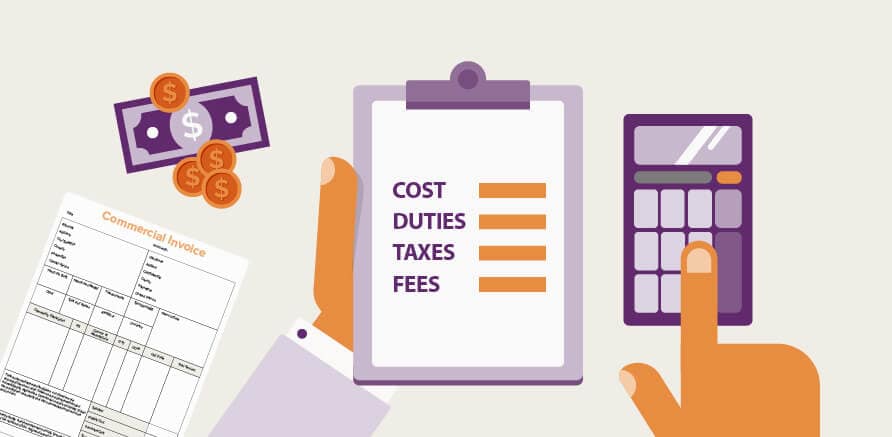Global trade between China and Japan continues to thrive, with countless companies relying on container shipping China to Japan to move goods efficiently. This guide explains costs, transit times, shipping options, and practical case studies to help you plan seamless shipments.
How Container Shipping Works Between China and Japan
Every shipment starts with proper planning and selection of transport mode. Container shipping China to Japan mainly uses sea freight, offering reliability, scalability, and cost efficiency for all cargo sizes.
| Shipping Method | Transit Time | Average Cost | Cargo Type |
|---|---|---|---|
| FCL (Full Container Load) | 3–7 days | $1,000–$1,400 per 20ft | Large volume |
| LCL (Less than Container Load) | 5–9 days | $90–$120 per CBM | Small volume |
| Express Sea Freight | 3–5 days | 15–20% higher | Urgent goods |
Accordingly, choosing between FCL or LCL depends on shipment size, delivery urgency, and cost tolerance.

What Are the Main Routes for Container Shipping?
Popular routes ensure dependable delivery schedules between China and Japan.
- Shanghai → Tokyo / Yokohama: 3–4 days
- Ningbo → Osaka / Kobe: 5–6 days
- Qingdao → Fukuoka: 4–5 days
Additionally, feeder services connect inland Chinese cities via rail to major seaports, reducing pre-export time.
How Much Does Container Shipping from China to Japan Cost?
Shipping cost depends on volume, container type, and destination.
| Container Type | Average Rate | Description |
|---|---|---|
| 20ft Dry Container | $1,000–$1,400 | For general goods |
| 40ft Dry Container | $1,700–$2,200 | Ideal for bulk cargo |
| 40ft High Cube | $1,800–$2,400 | For light, large-volume items |
| Reefer Container | $2,600–$3,200 | For temperature-controlled goods |
Moreover, extra charges may apply for port handling, customs inspection, and warehouse storage. Importers can lower costs through long-term freight contracts or groupage shipments.
What Documents Are Required for Customs Clearance?
Proper documentation ensures smooth border crossing between China and Japan.
| Document | Purpose |
|---|---|
| Commercial Invoice | Declares shipment value |
| Packing List | Details package contents |
| Bill of Lading | Serves as proof of transport |
| Certificate of Origin | Confirms source country |
| Import License | Required for restricted goods |
Furthermore, shipments must comply with Japan’s Customs Law, which enforces inspection on electronics, food, and machinery.
What Factors Affect Transit Time and Cost?
Several elements influence total logistics performance:
- Seasonal Demand: Peak holiday seasons raise freight rates.
- Port Congestion: High traffic causes minor delays.
- Weather Conditions: Typhoons may postpone vessel schedules.
- Customs Processing: Incomplete paperwork increases clearance time.
- Container Availability: Tight supply can impact booking dates.
Consequently, booking early and maintaining correct documentation minimize unexpected costs.
Real Case Studies of Container Shipping China to Japan
📦 Case 1 – Consumer Electronics
Route: Shenzhen → Tokyo
Cargo: 1×40ft container, 12 tons electronics
Method: Sea Freight (FCL)
Transit Time: 5 days
Cost: $1,850 total
Result: Delivered ahead of deadline, avoiding $4,000 stockout losses.
🚢 Case 2 – Furniture
Route: Ningbo → Kobe
Cargo: 2×20ft containers
Method: Sea Freight (FCL)
Transit Time: 6 days
Cost: $2,600 combined
Result: Cost reduced by 15% through consolidation and efficient port scheduling.
How to Choose the Right Container for Your Cargo
Selecting the correct container impacts safety and cost-efficiency.
| Container Type | Best For | Key Advantage |
|---|---|---|
| 20ft Dry | Dense goods | Compact and economical |
| 40ft Dry | General cargo | Better per-unit cost |
| 40ft High Cube | Bulky cargo | Extra vertical space |
| Reefer | Perishables | Temperature control |
| Open Top | Oversized cargo | Easy loading access |
Therefore, consulting your freight forwarder ensures your cargo uses the optimal container type for the best cost–benefit ratio.

Key Tips for Smoother Container Shipping
Efficient preparation leads to predictable delivery outcomes:
- Inspect containers before loading.
- Label each package clearly.
- Use moisture absorbers for sea routes.
- Schedule shipments before holidays.
- Communicate regularly with logistics partners.
As a result, these steps enhance visibility, minimize delays, and maintain supply chain reliability.
Conclusion
Efficient container shipping China to Japan requires strategic planning, timely booking, and reliable logistics coordination. Whether you’re exporting electronics, furniture, or perishables, selecting the right freight method and container ensures consistent quality, lower cost, and faster delivery. Working with a trusted logistics provider guarantees smoother customs processing and dependable transit performance every time.
- Consult TJ China Freight Forwarding for the lowest quote. They will provide you with reliable, cost-effective service.
FAQs
Q1.How long does container shipping take from China to Japan?
Standard container shipments take 3–7 days depending on port pair, vessel schedule, and customs inspection time.
Q2.Which ports handle most China–Japan trade?
Shanghai, Ningbo, and Qingdao in China, along with Tokyo, Osaka, and Yokohama in Japan, manage the majority of trade.
Q3.How can I reduce container shipping costs?
Consolidate shipments, book early, and select FCL service to reduce per-unit transport costs for bulk goods.
Q4.What goods require reefer containers?
Perishable items such as seafood, fruit, and pharmaceuticals need refrigerated containers to maintain proper temperature and quality.
Q5.Is LCL shipping reliable for small importers?
Yes, LCL shipping is secure and economical for small quantities when working with reputable freight consolidators.

